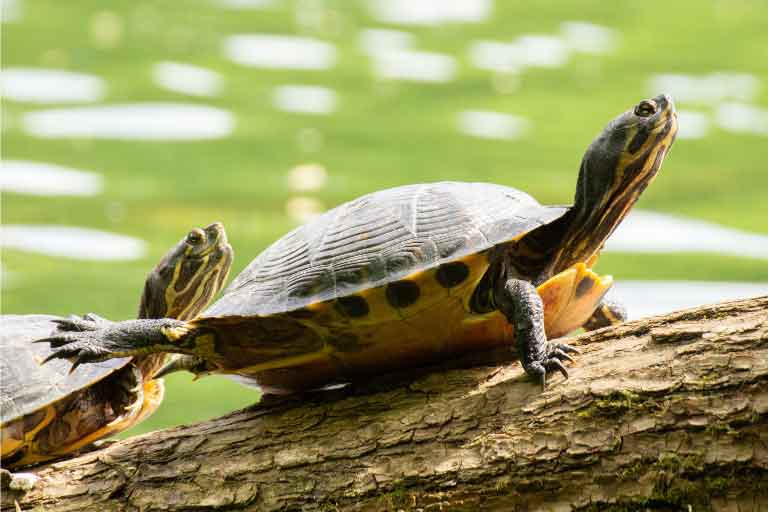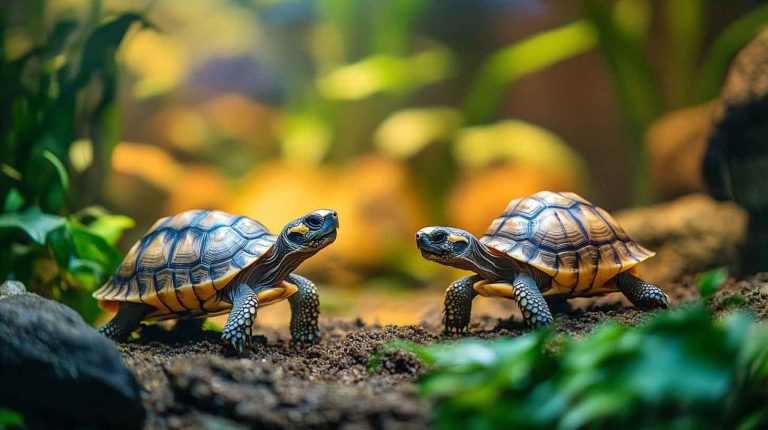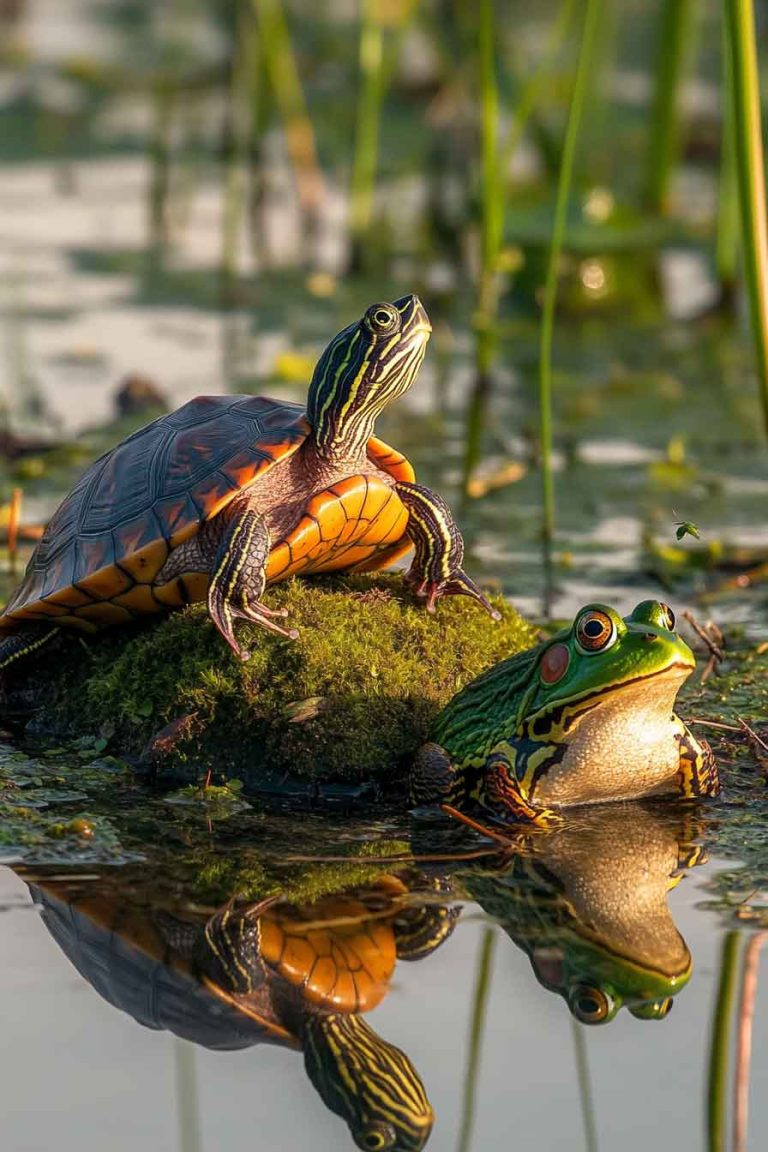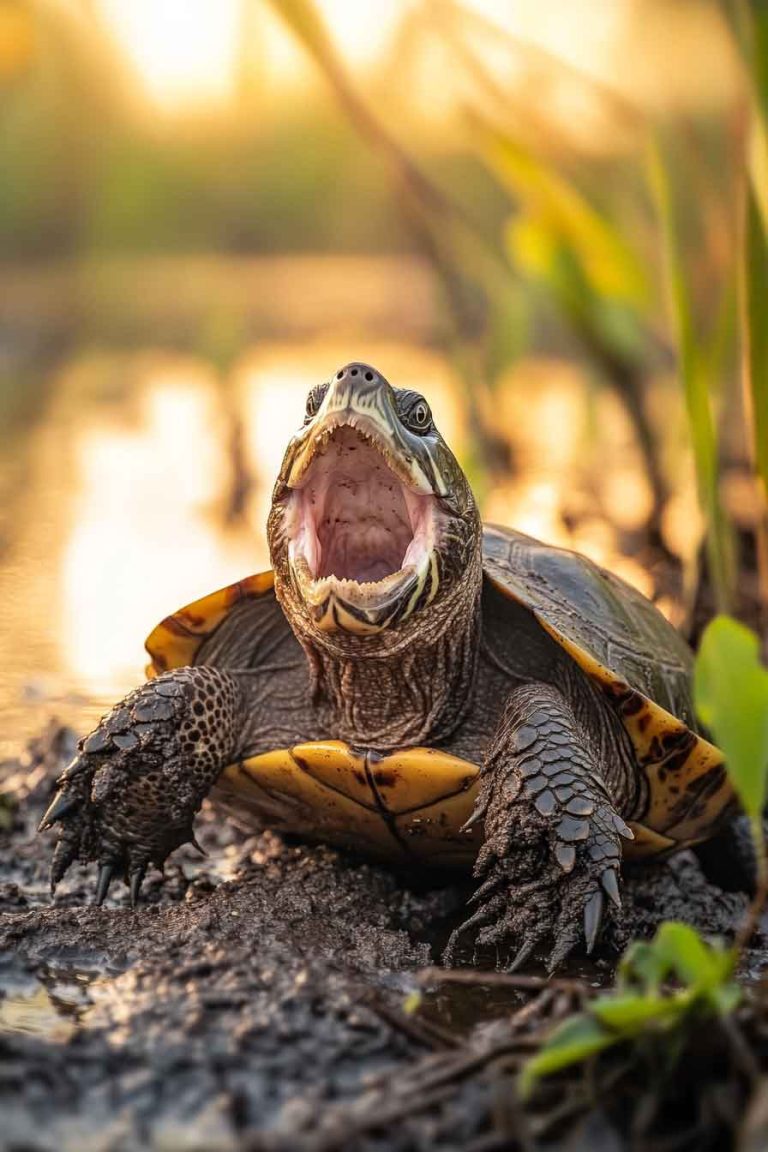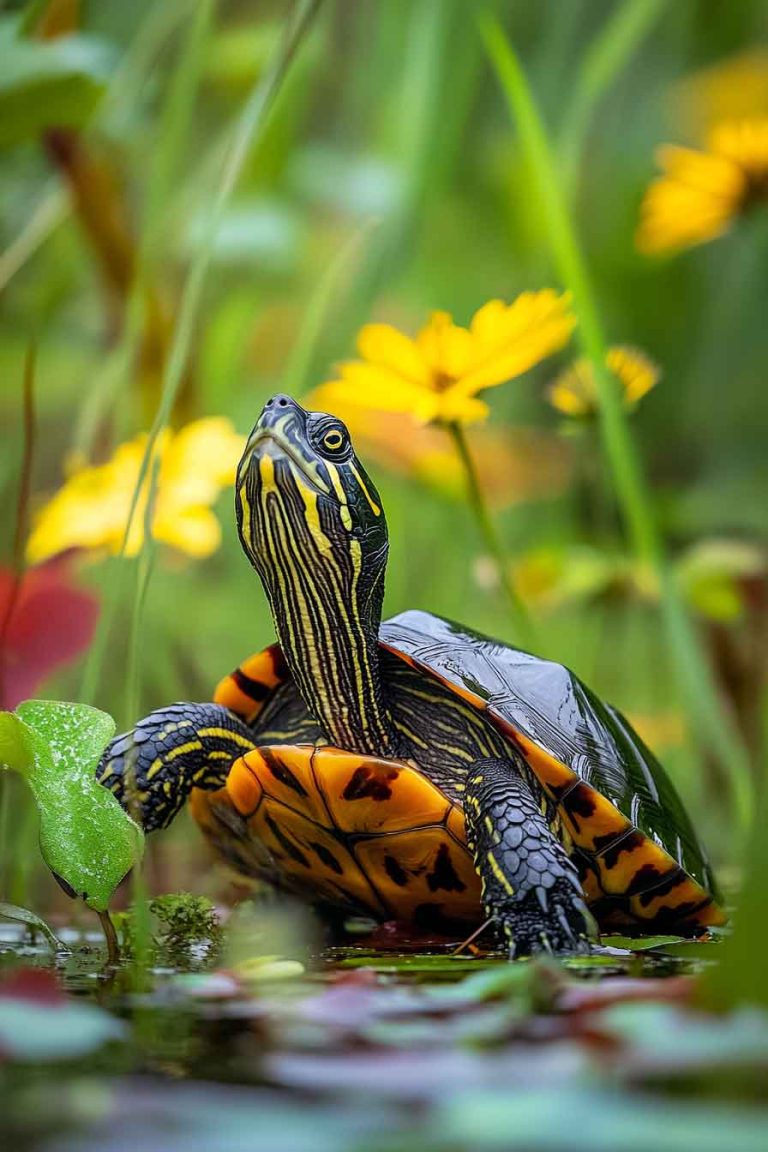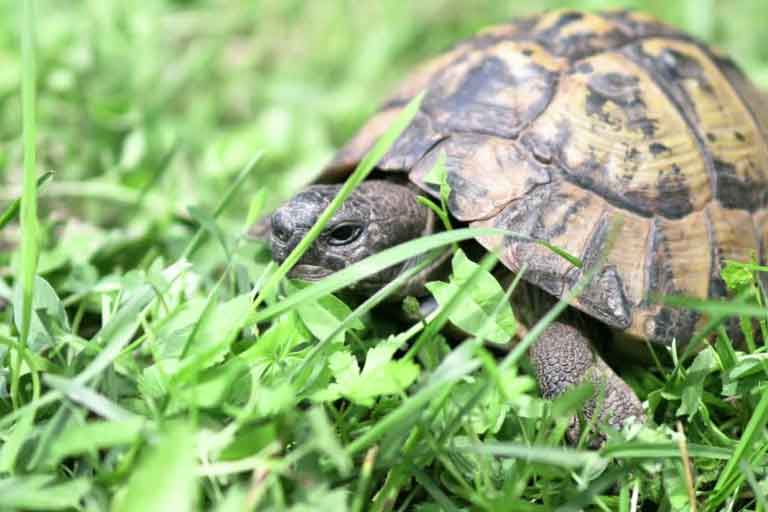Why Does My Turtle Stare At Me?
Hey there, turtle lovers! If you’re anything like me, you’ve probably caught your turtle giving you that look—you know, the one where they tilt their head, lock eyes, and just… stare. It’s adorable, a little mysterious, and maybe even a bit unnerving. Why do they do it? Is it love, curiosity, or are they plotting…
Hey there, turtle lovers! If you’re anything like me, you’ve probably caught your turtle giving you that look—you know, the one where they tilt their head, lock eyes, and just… stare. It’s adorable, a little mysterious, and maybe even a bit unnerving. Why do they do it? Is it love, curiosity, or are they plotting something? As a turtle owner myself, I’ve wondered the same thing, so let’s dive into the fascinating world of turtle behavior to figure out why your shelled buddy is staring at you.
In this post, I’ll share what I’ve learned about why turtles stare, based on their natural instincts and behaviors. We’ll explore the reasons behind those intense gazes, what they might mean, and how you can better understand your pet. Plus, I’ll throw in some tips to make your turtle feel safe and happy while they’re watching you. Ready? Let’s get started!
Why Does My Turtle Stare At Me?
Turtles are curious creatures, and their stares often reflect what’s going on in their little reptilian brains. Unlike dogs or cats, turtles don’t have expressive faces, so their eyes do a lot of the talking. When I first noticed my turtle, Sheldon, staring at me, I thought he was just being nosy. But there’s more to it than that! Here are some common reasons why your turtle might be giving you the eye:
1. They’re Curious About You
Turtles are naturally inquisitive, especially when it comes to their environment. You, my friend, are a big part of their world! When I move around the room or approach Sheldon’s tank, he often stares to figure out what I’m up to. Your turtle might be watching you to understand your movements, sounds, or even the bright colors of your clothes. To them, you’re like a giant, unpredictable creature, and they’re trying to make sense of you.
2. They Associate You With Food
Let’s be honest—turtles love their snacks. If you’re the one feeding your turtle, they’ve probably learned that your presence means food is coming. When I walk toward Sheldon’s tank with his favorite treats, his stare locks onto me like a laser. Your turtle might be staring because they’re hoping you’ll drop some yummy pellets or veggies their way. It’s their way of saying, “Hey, human, is it dinner time yet?”
3. They’re Observing Their Environment
Turtles are super aware of their surroundings, and their stares are often part of their vigilance. In the wild, turtles keep an eye on potential threats or changes in their habitat. Even in a cozy tank, your turtle might stare at you to monitor what’s happening. When Sheldon stares at me while I’m cleaning his tank, I can tell he’s keeping tabs on every move I make. Your turtle’s stare could just be their way of staying alert and in control.
What’s Going On In Their Head?
So, what’s your turtle thinking when they stare? I like to imagine Sheldon is sizing me up, but the truth is, turtles don’t think like we do. Their brains are wired for survival, so their stares are usually tied to instincts like curiosity, hunger, or caution. Here’s a peek into what might be happening:
- Curiosity Mode: Your turtle is trying to learn more about you or something you’re doing. Maybe you’re holding a new object, or you’ve changed something in their tank. When I added a new plant to Sheldon’s setup, he stared at it (and me) for days!
- Hunger Mode: If it’s close to feeding time, that stare is probably a polite (or not-so-polite) request for food. Turtles are smart enough to recognize patterns, so they know when you’re likely to feed them.
- Caution Mode: If your turtle feels unsure, their stare might be a way of assessing whether you’re a threat. This is especially true for newer pets who haven’t fully bonded with you yet.
I’ve noticed that Sheldon’s stares are most intense when I’m doing something unusual, like rearranging his basking area. It’s like he’s saying, “Human, what are you messing with now?” Your turtle’s stare is their way of processing the world, so don’t take it personally if they seem a bit suspicious!
How Can I Tell What My Turtle’s Stare Means?
Now that we’ve covered the main reasons why your turtle stares, let’s talk about how to decode those looks. I’ll admit, when I first started caring for Sheldon, I wasn’t sure if his stares were friendly, hungry, or just plain judgmental! Over time, I’ve learned to pay attention to his body language and the context of his stares. Here are some clues to help you figure out what your turtle’s gaze is all about:
1. Check Their Body Language
Your turtle’s posture can tell you a lot about their mood. When Sheldon stretches his neck out and stares, he’s usually curious or expecting food. But if he pulls his head slightly into his shell while watching me, I know he’s feeling cautious. Here’s what to look for:
- Neck Extended, Eyes Wide: This usually means curiosity or excitement (probably about food!).
- Head Partially Retracted: Your turtle might be feeling unsure or defensive.
- Basking While Staring: If they’re chilling on their basking spot and staring, they’re likely just observing you casually.
Next time your turtle locks eyes with you, take a peek at their posture—it’s like a secret code to their thoughts!
2. Consider the Timing
The time of day or what’s happening around the tank can give you hints about their stare. I’ve noticed Sheldon stares at me most when I’m near his tank during feeding time or when I’m cleaning. If your turtle stares when you’re holding their food container, they’re probably thinking, “Hurry up already!” But if they stare when you’re moving furniture or making loud noises, they might just be keeping an eye on the commotion.
3. Watch for Patterns
Turtles are creatures of habit, and their stares often follow patterns. For example, Sheldon always stares at me when I sit near his tank with my morning coffee—it’s like he knows my routine! If your turtle stares at the same time every day or when you do specific things (like turning on a lamp), they’re likely reacting to those cues. Keep track of when the staring happens to get a better sense of what’s triggering it.
Tips to Make Your Turtle Feel Comfortable While They Stare
Your turtle’s stares are a sign they’re engaged with you, which is awesome! But sometimes, those stares can mean they’re feeling stressed or unsure. I’ve learned a few tricks to keep Sheldon relaxed and happy while he’s watching me, and I’m excited to share them with you. Here’s how you can make your turtle feel at ease:
1. Move Slowly and Predictably
Turtles don’t love sudden movements, so try to approach their tank calmly. When I need to clean Sheldon’s tank or refill his water, I move slowly to avoid startling him. If your turtle is staring because they’re nervous, slow and steady movements will help them feel safe.
2. Create a Comfortable Environment
A happy turtle is less likely to stare out of stress. Make sure their tank has enough space, clean water, and a cozy basking area. I added a hiding spot for Sheldon, and I’ve noticed he stares less intensely when he knows he has a safe place to retreat. Check that your turtle’s setup meets their needs—proper lighting, temperature, and space can make a big difference.
3. Build Trust Over Time
If your turtle is new or shy, their stares might mean they’re still getting used to you. I spent weeks just sitting near Sheldon’s tank, talking softly and offering food, to build his trust. Try spending quiet time near your turtle’s tank or hand-feeding them (with tongs to avoid nibbles!). Over time, their stares might shift from cautious to curious.
4. Don’t Stare Back Too Intensely
This one sounds funny, but it’s true! Staring directly at your turtle can make them feel threatened, especially if they’re already nervous. I’ve found that glancing at Sheldon briefly and then looking away helps him relax. Try not to lock eyes for too long—let your turtle feel like they’re the one in charge of the staring contest!
FAQs About Turtle Staring
You’ve got questions, and I’ve got answers! Here are some common questions I hear from fellow turtle owners about why their turtles stare, along with insights I’ve picked up from my time with Sheldon:
1. Is My Turtle Staring Because They Like Me?
Turtles don’t feel “like” the way humans do, but they can recognize you as a safe part of their world. If your turtle stares when you’re around, it’s a sign they’re comfortable with you—especially if they’re not hiding or retracting into their shell. Sheldon stares at me a lot, and I like to think it’s his way of saying, “You’re alright, human.”
2. Can My Turtle’s Stare Mean They’re Unhappy?
Sometimes, yes. If your turtle stares while showing signs of stress—like hiding a lot, refusing food, or being overly skittish—they might be uncomfortable. Check their tank conditions (water quality, temperature, space) and make sure nothing’s stressing them out. When I noticed Sheldon staring more than usual, I realized his water was a bit cloudy, and a quick clean-up fixed it!
3. Do All Turtles Stare the Same Way?
Not exactly! Different species have different personalities. For example, red-eared sliders like Sheldon tend to be bold and curious, so they stare a lot. Shyer species, like box turtles, might stare less or hide more. Pay attention to your turtle’s unique quirks to understand their staring style.
Final Words
So, why does your turtle stare at you? It’s likely a mix of curiosity, hunger, or just their way of keeping an eye on their favorite human (that’s you!). I’ve loved watching Sheldon’s stares evolve from cautious glances to confident gazes as we’ve bonded over time. Your turtle’s stares are a window into their world, so take it as a chance to learn more about them.
To keep those stares friendly, make sure your turtle’s home is comfy, approach them gently, and give them time to trust you. Before you know it, you’ll be decoding their looks like a pro! If you’ve got any funny stories about your turtle’s staring habits or tips of your own, I’d love to hear them—drop a comment below and let’s chat about our shelled buddies.
Thanks for joining me on this deep dive into turtle stares. Keep being an awesome turtle parent, and I’ll see you next time with more tips and tricks for our reptilian pals!

